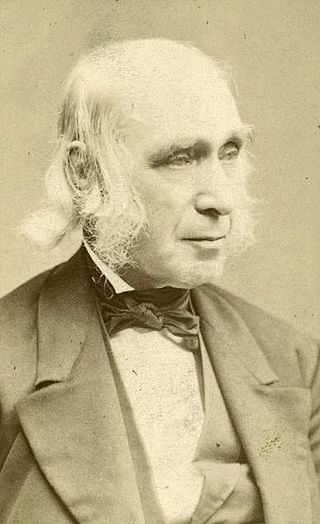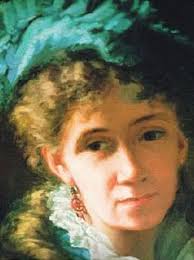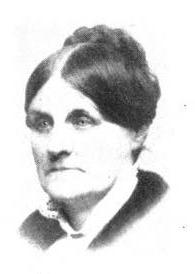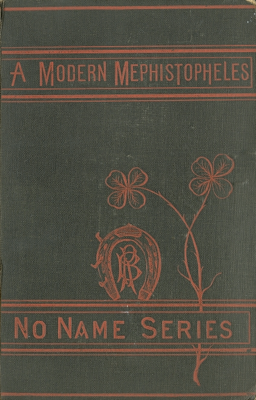
Amos Bronson Alcott was an American teacher, writer, philosopher, and reformer. As an educator, Alcott pioneered new ways of interacting with young students, focusing on a conversational style, and avoided traditional punishment. He hoped to perfect the human spirit and, to that end, advocated a plant-based diet. He was also an abolitionist and an advocate for women's rights.

Louisa May Alcott was an American novelist, short story writer, and poet best known for writing the novel Little Women (1868) and its sequels Good Wives (1869), Little Men (1871) and Jo's Boys (1886). Raised in New England by her transcendentalist parents, Abigail May and Amos Bronson Alcott, she grew up among many well-known intellectuals of the day, including Margaret Fuller, Ralph Waldo Emerson, Nathaniel Hawthorne, Henry David Thoreau, and Henry Wadsworth Longfellow.

Little Women is a coming-of-age novel written by American novelist Louisa May Alcott, originally published in two volumes in 1868 and 1869. The story follows the lives of the four March sisters—Meg, Jo, Beth, and Amy—and details their passage from childhood to womanhood. Loosely based on the lives of the author and her three sisters, it is classified as an autobiographical or semi-autobiographical novel.

The Pursuit of Love is a novel by Nancy Mitford, first published in 1945. It is the first in a trilogy about an upper-class English family in the interwar period focusing on the romantic life of Linda Radlett, as narrated by her cousin, Fanny Logan. Although a comedy, the story has tragic overtones.

Abigail May Alcott Nieriker was an American artist and the youngest sister of Louisa May Alcott. She was the basis for the character Amy in her sister's semi-autobiographical novel Little Women (1868). She was named after her mother, Abigail May, and first called Abba, then Abby, and finally May, which she asked to be called in November 1863 when in her twenties.

Little Women is a 1994 American coming-of-age historical drama film directed by Gillian Armstrong. The screenplay by Robin Swicord is based on Louisa May Alcott's 1868–69 two-volume novel of the same title, the fifth feature film adaptation of the classic story. After a limited release on December 25, 1994, it was released nationwide four days later by Columbia Pictures.

Little Men, or Life at Plumfield with Jo's Boys, is a children's novel by American author Louisa May Alcott (1832–1888), which was first published in 1871 by Roberts Brothers. The book reprises characters from her 1868–69 two-volume novel Little Women, and acts as a sequel, or as the second book in an unofficial Little Women trilogy. The trilogy ends with Alcott's 1886 novel Jo's Boys, and How They Turned Out: A Sequel to "Little Men". Alcott's story recounts the life of Jo Bhaer, her husband, and the various children at Plumfield Estate School. Alcott's classic novel has been adapted to a 1934 film, a 1940 film, a 1998 film, a television series, and a Japanese animated television series.

Abigail "Abba" Alcott was an American activist for several causes and one of the first paid social workers in the state of Massachusetts. She was the wife of transcendentalist Amos Bronson Alcott and mother of four daughters, including Civil War novelist Louisa May Alcott.

Jessie Willcox Smith was an American illustrator during the Golden Age of American illustration. She was considered "one of the greatest pure illustrators". A contributor to books and magazines during the late 19th and early 20th centuries, Smith illustrated stories and articles for clients such as Century, Collier's, Leslie's Weekly, Harper's, McClure's, Scribners, and the Ladies' Home Journal. She had an ongoing relationship with Good Housekeeping, which included a long-running Mother Goose series of illustrations and also the creation of all of the Good Housekeeping covers from December 1917 to 1933. Among the more than 60 books that Smith illustrated were Louisa May Alcott's Little Women and An Old-Fashioned Girl, Henry Wadsworth Longfellow's Evangeline, and Robert Louis Stevenson's A Child's Garden of Verses.

Jo's Boys, and How They Turned Out: A Sequel to "Little Men" is a novel by American author Louisa May Alcott, first published in 1886. The novel is the final book in the unofficial Little Women series. In it, the March sisters' children and the original students of Plumfield, now grown, are caught up in real world troubles as they work towards careers and pursue love.

Aunt Jane's Nieces is the title of a juvenile novel published by Reilly & Britton in 1906, and written by L. Frank Baum under the pen name "Edith Van Dyne." Since the book was the first in a series of novels designed for adolescent girls, its title was applied to the entire series of ten books, published between 1906 and 1918.

Under the Lilacs is a children's novel by Louisa May Alcott, first published as a serialized story in St. Nicholas magazine in 1877-1878. It was first published in book form by Roberts Brothers in 1878. The plot follows twelve-year-old Ben Brown, a circus runaway who makes friends with the Moss family. He also becomes friends with Miss Celia and her brother Thornton, and Miss Celia eventually allows Ben to live at her house.

William Andrus Alcott, also known as William Alexander Alcott, was an American educator, educational reformer, physician, vegetarian and author of 108 books. His works, which include a wide range of topics including educational reform, physical education, school house design, family life, and diet, are still widely cited today.

Rose in Bloom is a novel by Louisa May Alcott published in 1876. It depicts the story of a nineteenth-century girl, Rose Campbell, finding her way in society. It is Alcott's sequel to Eight Cousins.

Merry's Museum (1841–1872) was an illustrated children's magazine established by Samuel Griswold Goodrich in Boston, Massachusetts, in 1841. Louisa May Alcott served as editor for a year or so, and also contributed stories, as did Lucretia Peabody Hale, Caroline Hewins, Rebecca Sophia Clarke, Helen W. Pierson, and others. For some time it was published in New York.
Behind a Mask, or A Woman's Power is a novella written by American author Louisa May Alcott. The novella was originally published in 1866 under the pseudonym of A. M. Barnard in The Flag of Our Union. Set in Victorian era Britain, the story follows Jean Muir, the deceitful governess of the wealthy Coventry family. With expert manipulation, Jean Muir obtains the love, respect, and eventually the fortune of the Coventry family.
John Bridge Pratt was the husband of Anna Bronson Alcott Pratt, the elder sister of novelist Louisa May Alcott. He inspired the fictional character John Brooke in his sister-in-law Louisa May Alcott's best known novels.

Frances Stern (1873–1947) was one of the first nutritionists in the United States. In 1918 she founded the Boston Dispensary Food Clinic, which evolved into what is now the Frances Stern Nutrition Center at Tufts Medical Center.
Harriet Roosevelt Richards was an American illustrator, best known for her work in children's books and magazines.

A Modern Mephistopheles is a gothic thriller published by the Roberts Brothers in 1877 and written by Louisa May Alcott. It is based on Goethe's Faust and contains stylistic elements Alcott used earlier in her writing career. The novel follows Felix Canaris and Gladys, two young people whose lives are manipulated by a wealthy semi-invalid Jasper Helwyze, who seeks to undermine their relationship for psychological experimentation. Under Helwyze's direction, Canaris and Gladys marry. Gladys and Canaris eventually overcome Helwyze's influence on them.

















